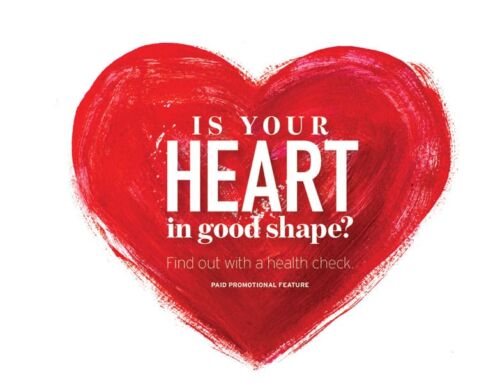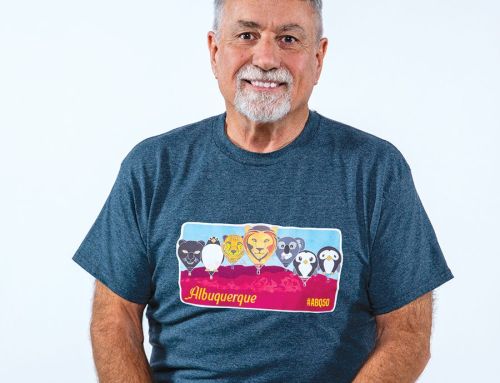By Akers Editorial
Best of both worlds
 Cardiologist Mark Rothschild is the picture of a man twice-blessed.
Cardiologist Mark Rothschild is the picture of a man twice-blessed.
STORY: Pat Jocelyn PHOTOS: Mark Rothschild
It was the old man and the ageless task he was performing that first captured the good doctor’s attention.
Dr. Mark Rothschild had just arrived in a small village in Tari Province in Papua, New Guinea, and he was intrigued with the vignette being played out before him.
It was an image Rothschild captured on camera.
“I noticed a village elder had two pieces of twine and was rubbing them together (with a piece of bamboo),” Rothschild said. Fascinated, the Central Florida cardiologist continued to observe the old man. “He made a fire and then lit his pipe. That’s when I took a picture of him.”
“This is one of my favorites,” Rothschild said as he studied the photo of the old man. “Photographically, it’s a really cool picture. He didn’t pose for this and his eyes are gazing (into the distance) so you got a perfect angle. He’s wearing a beautiful purple and red sari. And the fact that he made the fire that lit his pipe … I mean, where else are you going to see things like this? It’s so unique.”
It’s unique because Papua New Guinea is in the southwest Pacific Ocean, 8,378 miles from Rothschild’s office at Heart of the Villages, a medical group in The Villages. And unique because Rothschild is a cardiologist with a camera, not a professional photographer, explorer or anthropologist.
 Papua New Guinea is known for cultural diversity and an unbelievably high number of social structures and traditions that can be traced back hundreds of years and are still in use. It’s the kind of third-world society Rothschild is drawn to. He enjoys photographing images of the people, their traditions, their cultures, their animals and their breathtakingly beautiful landscapes.
Papua New Guinea is known for cultural diversity and an unbelievably high number of social structures and traditions that can be traced back hundreds of years and are still in use. It’s the kind of third-world society Rothschild is drawn to. He enjoys photographing images of the people, their traditions, their cultures, their animals and their breathtakingly beautiful landscapes.
“You see the decay of American civilization living in contemporary society,” Rothschild said. “Then you go to Mali (West Africa) and do a three-day trek from one village to another, sleep in a sleeping bag and meet the people; the things you see and the cultures you become exposed to — that’s what I like.”
Rothschild said he was a little surprised at his own reaction to third-world travel.
“I didn’t really know I would like that kind of thing but I discovered there’s a whole world out there and it’s different from anything I’ve ever experienced,” he said.
It’s more than knowing where a country is on the map; it’s more about the exploration and discovery.
“Wouldn’t it be great to really discover a lot more things?” Rothschild asked himself.
 You might think photography and cardiology are as different as hot dogs and caviar, but Rothschild doesn’t necessarily agree.
You might think photography and cardiology are as different as hot dogs and caviar, but Rothschild doesn’t necessarily agree.
“Photography, like cardiology, takes a certain amount of technical proficiency — it’s not something you just learn to do in a day or two,” he said. “It’s something that takes a period of time and training.”
The Syracuse, New York, native knows a thing or two about time and training. It took 14 years of training to become a non-invasive cardiologist — that is, a cardiologist who uses external tests to evaluate and diagnose cardiac disorders.
Rothschild is clearly dedicated to his profession.
“Cardiology is the cornerstone of internal medicine,” he explained. “More people die of heart disease than any other disease by far. (Cardiology) is a lot of work but people benefit from it, and it’s emotionally and intellectually gratifying.”
The 60-year-old loves working in the medical field and doesn’t plan to retire anytime soon. But he is looking ahead.
“I can’t do full-time cardiology forever, and over the last few years I’ve had a desire to become more professional with my photography,” he said. “It started out as just being fun. Now I’m trying to get up to another level.”
That other level is to eventually become a photojournalist, but he wants to focus on more than just taking the photo.
“I would like to go beyond the superficial,” he added. “I’d like to delve into why a culture is the way it is.”
Rothschild wasn’t always keenly interested in photography. When he was 25, he backpacked through Western Europe and the British Isles for three months. He had a little point-and-shoot camera and took quite a few pictures, but admits they weren’t very good.
Rothschild’s interest increased when digital photography came along. He wanted to learn more. His medical career left little time for traditional classroom training, so he turned to the Internet and online courses. Rothschild continued taking courses as time allowed. And he also continued his travels.
 “I’ve been to 33 countries and have a short and medium list of places I’d like to see,” he said. “It’s not just the photography, it’s the travel. It makes perfect sense to marry the two and do travel photography.”
“I’ve been to 33 countries and have a short and medium list of places I’d like to see,” he said. “It’s not just the photography, it’s the travel. It makes perfect sense to marry the two and do travel photography.”
Initially he traveled with a friend, Cliff Malzman, who’s visited 66 countries and is a talented photographer. Now Rothschild travels with wife, Lisa.
So, has photography changed him?
“Everybody is the sum product of all their experiences,” he said. “I am the way I am today because of all my experiences to date. I think my personality today has been contributed to by traveling and meeting and talking to people.”
His medical career has, of course, also has played a major role in his life.
“That’s my background and that’s what I’ve done,” he said. “I come to travel and photograph from a different perspective. I’m not an artist. I’m a professional person who has embraced the art of photography. I’ve found ways of learning the technical aspects of photography and being able to develop it in a creative way that I never thought of myself as being able to do.”
And those similarities between photography and cardiology? There’s another.
Watching this cardiologist interpret the intricate results of an echocardiogram is in many ways similar to watching him interpret the results of the digital image he had taken of the indigenous man smoking a pipe. Both images were powerful and both fulfilled the purpose of documenting a portion of life itself. And it was Dr. Mark Rothschild’s job to accurately translate and share the story of what he saw before him.

































